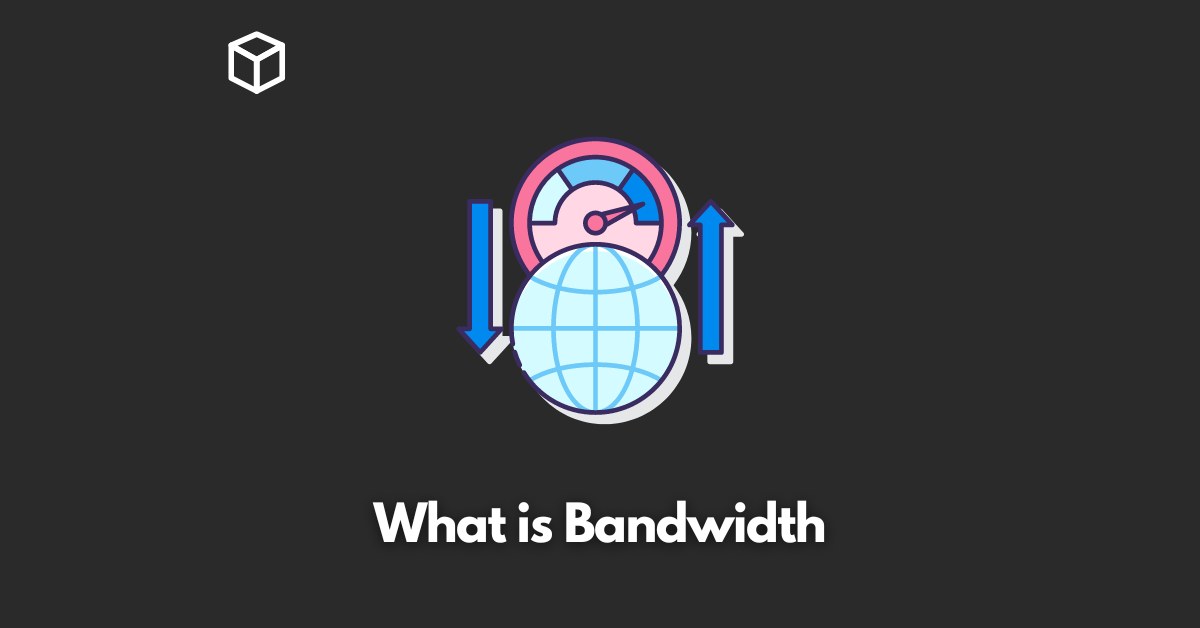Bandwidth is a term that is often thrown around in the tech world, but do you really understand what it means and why it’s important?
In this article, we’ll break down what bandwidth is, how it’s measured, and how you can optimize it for a better internet and network experience.
Definition of Bandwidth
Bandwidth refers to the amount of data that can be transmitted over a network connection in a given amount of time, typically measured in bits per second (bps).
It’s the capacity of a connection and determines the speed and quality of your internet and network connections.
Importance of Bandwidth in Network and Internet Connections
Bandwidth is a crucial component of any network or internet connection.
It affects the speed at which pages load, the quality of streaming video and audio, and the ability to transfer large files.
With the increasing reliance on the internet for everything from work to entertainment, having sufficient bandwidth is more important than ever.
How Bandwidth is Measured
Units of Measurement (bps, Kbps, Mbps, Gbps)
Bandwidth is measured in bits per second (bps), but it can also be measured in kilobits per second (Kbps), megabits per second (Mbps), and gigabits per second (Gbps).
The higher the number, the more data that can be transmitted in a given amount of time.
Factors that can Affect Bandwidth Measurement
There are several factors that can affect bandwidth measurement.
These include network congestion, the distance from the connection source, and the type of connection (cable, DSL, fiber optic).
Additionally, the hardware and software used to measure bandwidth can also affect the accuracy of the measurement.
Factors that Affect Bandwidth
Network Congestion
One of the biggest factors that can affect bandwidth is network congestion.
When a network is congested, there are too many devices trying to access it at the same time.
This can slow down the speed at which data is transmitted, leading to slower internet speeds and lower quality streaming.
Network Infrastructure
Another factor that can affect bandwidth is the quality of the network infrastructure. Outdated or poorly maintained equipment can lead to slower speeds and lower quality connections.
Distance from the Connection Source
Distance from the connection source can also affect bandwidth. The farther away you are from the source, the longer it takes for data to travel to your device, resulting in slower speeds.
Type of Connection
The type of connection can also affect bandwidth. Cable and fiber optic connections tend to be faster than DSL connections, but they also tend to be more expensive.
How to Optimize Bandwidth
Identifying and Addressing Bottlenecks
One of the best ways to optimize bandwidth is to identify and address bottlenecks in the network.
A bottleneck is a point in the network where there is a sudden decrease in speed.
By identifying and addressing these bottlenecks, you can improve the overall performance of the network.
Upgrading Network Infrastructure
Another way to optimize bandwidth is to upgrade your network infrastructure. This might include upgrading to faster hardware or replacing outdated equipment.
Implementing Traffic Shaping and QoS Techniques
Traffic shaping and Quality of Service (QoS) techniques can also be used to optimize bandwidth.
These techniques prioritize certain types of traffic, such as streaming video, to ensure that they have sufficient bandwidth.
Using Cloud-based Solutions
Cloud-based solutions can also be used to optimize bandwidth.
By storing data and running applications in the cloud, you can offload some of the traffic on your local network, freeing up bandwidth for other uses.
This can also help to reduce network congestion.
Conclusion
In summary, bandwidth is the capacity of a network or internet connection and is measured in bits per second (bps).
It plays a crucial role in determining the speed and quality of internet and network connections.
Factors that can affect bandwidth include network congestion, network infrastructure, distance from the connection source, and type of connection.
It’s important to monitor and manage your bandwidth to ensure that you have sufficient capacity to meet your needs.
By identifying and addressing bottlenecks, upgrading network infrastructure, implementing traffic shaping and QoS techniques, and using cloud-based solutions, you can optimize your bandwidth and improve your internet and network experience.




